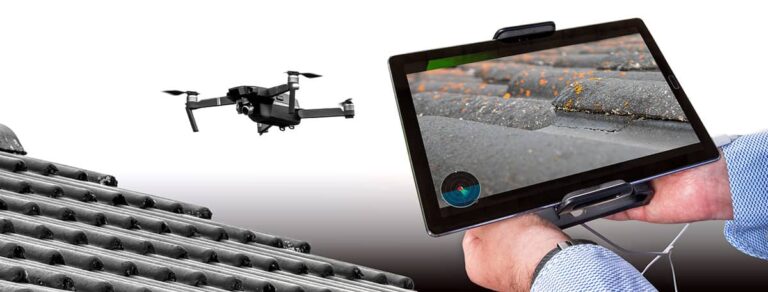How Drones are Blowing the Roof Off Insurance Fraud
Insurance is one of the largest industries in the world.
Today, the insurance industry is worth a staggering $5.8 trillion worldwide. This is even accounts for a contraction of 2.3% in 2020 due to the global pandemic.
At first glance, it might not seem like drones and insurance go together. However, there is already a well-established and growing relationship between the two industries.
According to the FAA, unmanned aerial vehicles (UAVs) used in the insurance industry accounted for 17% of all commercial drone applications in the United States during 2018.
Drone usage within the insurance industry is on the rise. Additionally, drones are proving to have secondary benefits beyond their functional attributes.
As seen in other sectors, UAVs improve safety, lower costs, and help prevent crime and loss.
Drone Use Cases in the Insurance Industry
Within the insurance industry, there are a surprising number of uses for drones.
One of the most frequently used is for roof inspections. Roofs are often one of the more costly parts of a structure’s upkeep.
Many insurance companies are hesitant to cover roof damage, especially if the roof is older than 20 years. As the structure’s first line of defense from the elements, roofs take a beating and wear quickly.
Claims for roof damage are quite common and require an insurance inspector to survey the damage. Too often, this involves physically climbing onto the roof.
Many safety-conscious insurance companies have started to use drones for this dangerous task. Some, such as Allstate, began using UAVs for this purpose as early as 2016.
Insurance fraud is often difficult to detect.
More and more, drones are making it easier to prevent these fraudulent claims. In one example, a person with a leaky roof before a storm may later attempt to claim the storm damaged the roof, causing the leaks.
Forward-thinking insurers are now using drones to examine a building’s condition before storms, to avoid fraudulent claims.
When storms do hit, especially major disasters, drones are used to rapidly assess damage and monitor recovery operations. By using UAVs, insurance companies quickly gain a better understanding of their liabilities, allowing for faster claim processing and recovery monitoring efforts.
Secondary Benefits
When we think of drones, it is too simple to view them as merely flying cameras.
While they are platforms for aerial photography or data collection, their benefits extend well beyond the information they gather.
Three of the most important secondary benefits drones bring to the industry are: Improved safety, lower costs, and the prevention of criminal habits.
Insurance inspectors are often placed in dangerous situations. Deadly heights, toxic environments, and the aftermath of natural disasters present conditions that place insurance inspectors in harm’s way.
Drones have no problem operating at height or other hazardous situations. The chance of an inspector injuring themselves is significantly less when a drone is used for damage assessment.
Thanks to improved efficiencies that UAVs bring to the table, insurance companies generally see cost reductions by bringing drones into their programs.
UAVs can inspect an area much faster than a human can.
With numerous options for payloads ranging from RGB cameras to thermal imaging options, drones can collect several types of data simultaneously, including GPS locations. Moving faster while collecting more data means less need for manpower and lower costs.
Crime and financial results of criminal activity are significant concerns for insurance companies. Insurance fraud and theft represent immediate threats to a company’s bottom line.
But, with the usage of drones, insurance companies have seen up to a 20% increase in catching fraudulent claims.
UAVs act as a flying security force and criminal deterrent. Drones monitor assets to prevent theft and lower insurance risks in areas such as shipping ports.
With an eye in the sky, these efforts prevent crime and allow for fewer claims needing to be paid out, thus preserving margins.
As early adopters of UAV technology, the insurance industry is seeing the benefit of utilizing drones.
From the simplest of applications, such as roof inspections, to sophisticated systems for monitoring insured goods’ locations, drones are a powerful tool for the insurance industry.
With such cases already providing ample proof of improved safety, lower costs, and reduction of loss from criminal activities, drones will continue to be a part of industry for years to come.

David Daly - Contributing Author
David Daly, is an award-winning photographer/writer and licensed (FAA) Commercial sUAS pilot. A graduate of the United States Naval Academy, David is a former Marine Corps officer with a BS in Oceanography and has earned his MBA from the University of Redlands. David has worked for Fortune 100 companies and has a background in aerospace, construction, military/defense, real estate, and technology.

